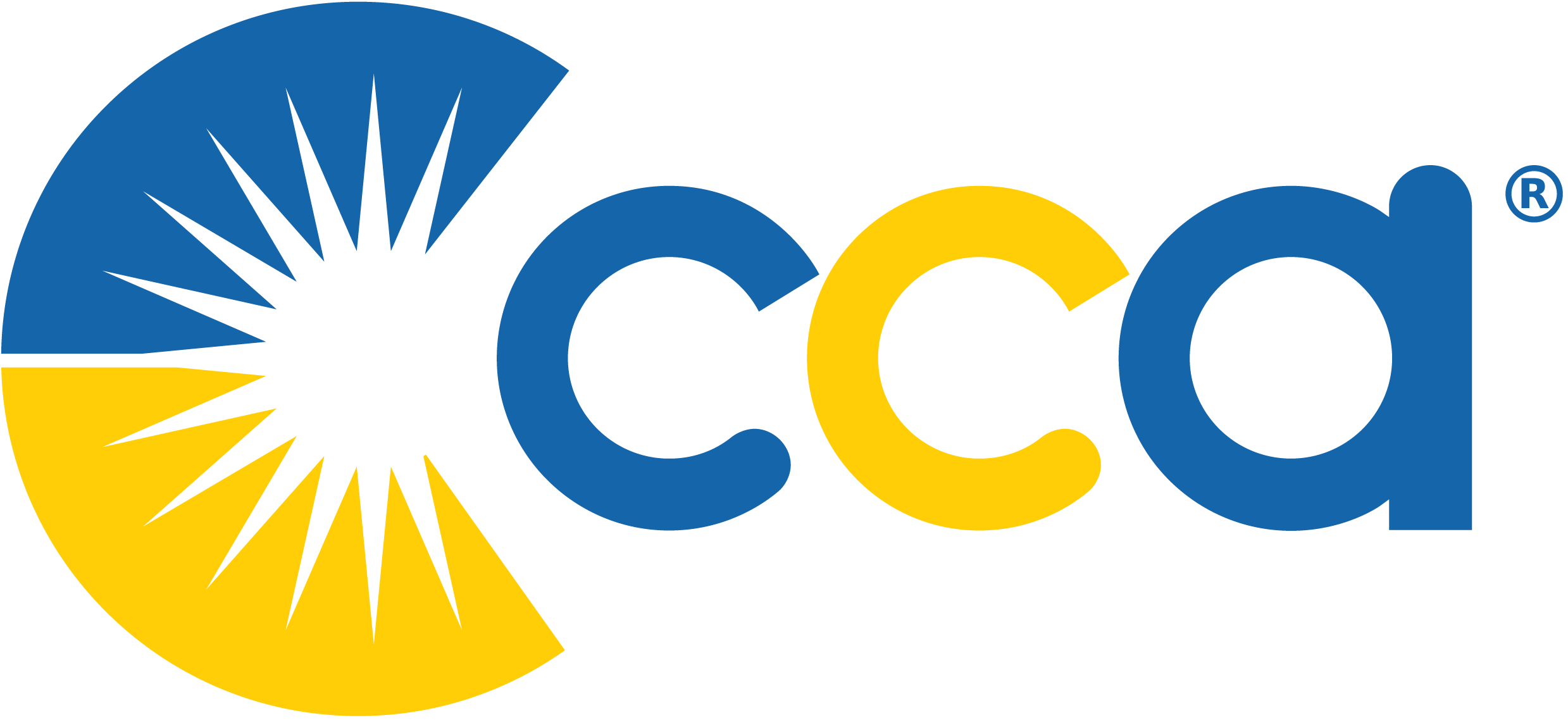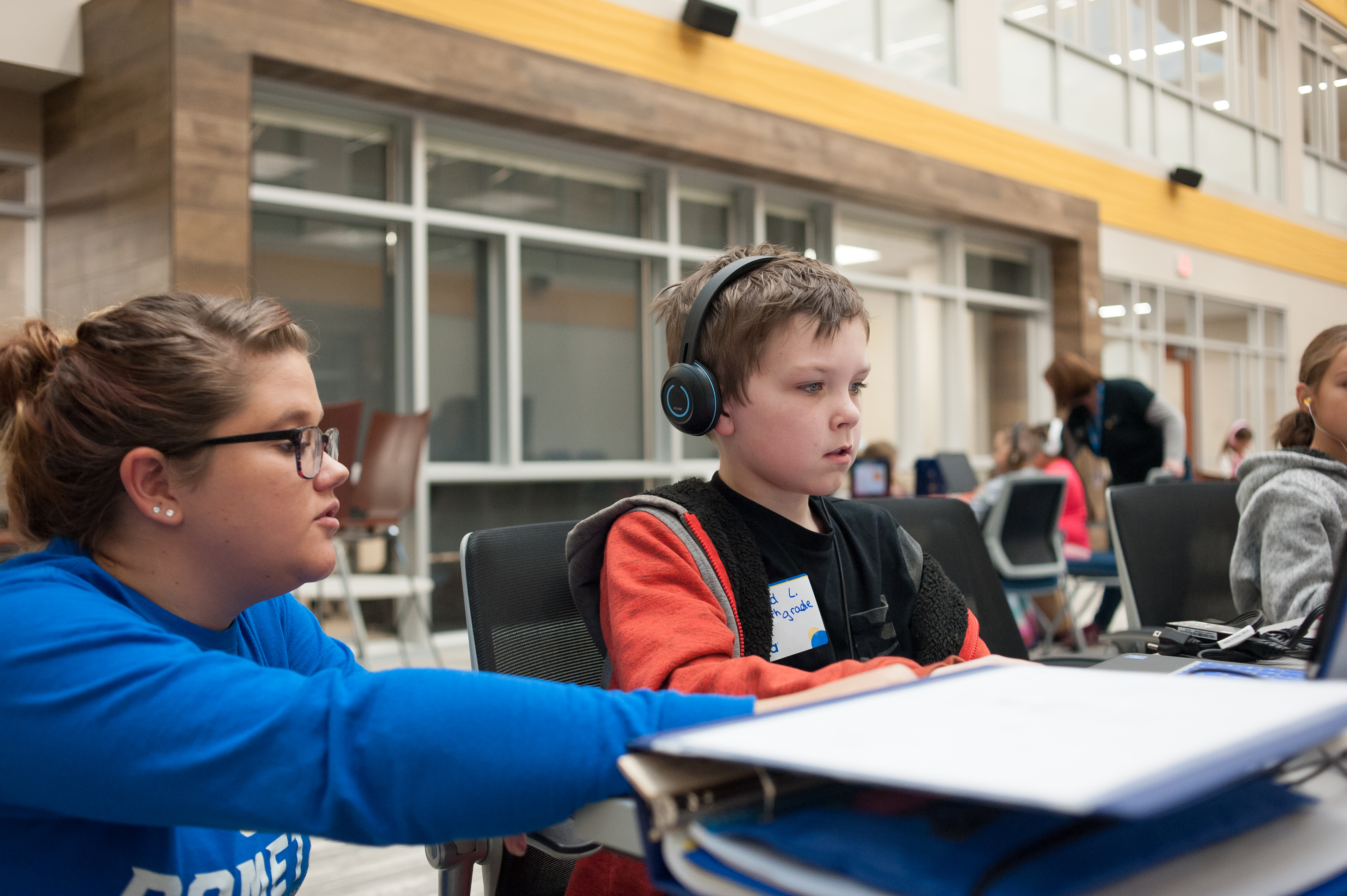Can you name the most common disease afflicting children in the U.S. today?
It’s not cancer or diabetes. It is the full range of mental health disorders. Nearly half of all U.S. children will have had a diagnosable mental illness by the time they turn 18. More than one child in four will endure serious impairment as a result.
And yet stigmas and misunderstandings keep children from getting meaningful help. Mental health disorders can be treated. Children can be good students and make academic progress — but only if they get consistent, caring interventions. Online school can be particularly beneficial at accommodating students with emotional and behavioral issues, addressing their underlying mental health needs while delivering personalized education that helps them learn and flourish.
Which Emotional and Behavioral Issues Affect Children and Adolescents?
Helping students with emotional and behavioral disorders begins with understanding their conditions. Emotional disturbances span a broad range of diagnoses. Symptoms can often be written off as “kids being kids,” but a closer look might reveal a mental disorder that is holding your child back academically and socially. These can include:
- Anxiety disorders: Anxiety isn’t normal when it becomes excessive, persistent, uncontrollable and overwhelming. Irrational fear is at the core of such anxiety disorders as post-traumatic stress disorder and social phobias.
- Bipolar disorder: Also previously known as manic-depressive illness, bipolar disorder takes your child on a roller-coaster ride of emotions, from happy to sad and back again. Periods of seemingly normal moods can happen in between. These mood extremes can dramatically affect energy and behavior.
- Conduct disorder: Children with conduct disorder struggle to follow rules and behave in socially acceptable ways. They might be aggressive toward people and animals, tend to destroy property or be deceitful, or be prone to truancy.
- Eating disorders: Too much or too little eating can signal an eating disorder. So can extreme concern about body weight or shape. Girls are much more likely than boys to develop eating disorders, which can be life-threatening. Children might starve themselves for dramatic weight loss, or they might binge eat and then self-induce vomiting or purging. Binge eating in itself is considered an eating disorder.
- Obsessive-compulsive disorder: OCD occurs when a child has recurrent, unwanted thoughts and believes that repetitive behaviors will drive them away. The cycle leads to constant hand-washing, counting, checking or cleaning.
- ADHD and disruptive behavior: Children diagnosed with ADHD, or attention deficit hyperactivity disorder, show signs of inattention, hyperactivity and impulsivity. Inattention can be seen in careless mistakes, poor listening, avoidance of tasks requiring sustained mental effort, and difficulty with organization and time management. Signs of hyperactivity include fidgeting, restlessness, difficulty with quiet activities and excessive talking.
- Autism spectrum disorder: Children on the autism spectrum can show a wide range of symptoms and abilities. They might have little interest in other people, use limited verbal language, find self-stimulation in things like hand flapping, underreact to pain but overreact to sounds, and have very good gross motor skills — the kinds that involve running, jumping and kicking — but weaknesses in the fine motor skills needed for writing and crafts.
- Psychotic disorders: Some disorders are so severe that they cause abnormal thinking. Children might suffer delusions, when false beliefs lead them to think, for instance, that someone is plotting against them. Hallucinations could cause them to see, hear or feel things that aren’t there.
Behavioral Challenges in the Classroom
You might be asking, “How can I help my student with emotional needs?” The question matters, because behavioral disorders, if left untreated, can have profoundly detrimental effects on your child’s academic performance.
What’s the connection? The link to the classroom can be seen in:
- Disruptions: Children with behavioral challenges might interrupt the daily flow of the classroom, distracting themselves and their classmates from focusing on their lessons.
- Fidgeting: Traditional classroom teaching demands that children sit still for long stretches while teachers talk. Some children with behavioral disorders need to roam, making them miss the lesson.
- Inability to follow directions: For children with behavioral problems, even gentle guidance can be intolerable. They might lash out or simply be unable to do what’s asked of them. This can lead to a breakdown in the process of receiving and completing assignments.
- Falling behind: Frustrated by the inability to understand — or be understood — children get caught in a vicious circle. Each missed lesson causes them to fall further behind in their academics, which creates more frustration and more moments of acting out.
- Sensory differences: Children with behavioral challenges process sounds and sights differently. Excessive stimulation can cause feelings of being overwhelmed, requiring time for a quiet break.
- Impulsivity: Children who lack impulse control find it hard to motivate themselves to do homework, listen quietly in class or approach a learning obstacle without an outburst.
The IDEA Act and Two Written Plans for Accommodating Students
The foundational platform for working with students with emotional and behavioral disorders is built on the Individuals With Disabilities Education Act, or IDEA, and the Rehabilitation Act of 1973.
Since 1975, IDEA has mandated that all eligible students ages 3 to 21 receive a free and appropriate public school education. To be eligible, students must be identified by a team of professionals as having a disability that adversely impacts academic performance and needing special education and related services. Students qualify for IDEA and the creation of an IEP, or individualized education program, if they’re diagnosed under one or more of 13 eligibility categories that impair learning. These categories include autism, emotional disturbances, specific learning disabilities and other health impairment, including ADHD.
In addition, children with any disability, whether or not it falls into one of the 13 categories, qualify for a 504 plan that ensures they receive appropriate accommodations.
The IEP and 504 plan are similar, but there are important differences, too.
What is an IEP? An IEP is a written plan or blueprint mapping the services and individualized special education that a child with disabilities will receive.
- Services are free to families. They can ask the school district to pay for an independent educational evaluation, or IEE, but the district doesn’t have to agree. In those cases, families can pay for an outside evaluation, but there’s no guarantee that districts will accept the findings.
- Parents work with teachers and psychologists as members of the team that creates and manages the IEP.
- The IEP establishes learning goals, benchmarks for measuring progress, services that the school will provide, accommodations to the child’s learning environment, and how the student will participate in standardized tests and be included in general education classes and school activities.
- If the school wants to make changes, families must be notified in writing.
- The IEP team must review the plan annually, and the child must be reevaluated every three years to determine whether services are still needed.
What is a 504 plan? The 504 is also a free blueprint or plan detailing how the school will provide support and remove barriers for a student with a disability. The goal is providing services and adapting the learning environment to give students the chance to learn alongside their peers.
- While IEPs are covered under IDEA, 504 plans are mandated by Section 504 of the Rehabilitation Act of 1973, a federal civil rights law protecting people with disabilities from discrimination.
- Section 504 defines disability more broadly than IDEA, so children with any disability that limits basic life activities qualify for 504 plans, as long as the disability interferes with the child’s ability to learn in a general education classroom. Parents aren’t allowed to ask for an IEE, but they can pay for one themselves.
- The 504 plan team isn’t as rigidly defined as an IEP team. Members are people who understand the child, evaluation data and available options, and can include parents or caregivers, teachers and principals.
- A 504 plan does not have to be written and doesn’t follow a particular format, but it generally includes specific accommodations, supports and services for the child.
- In general, and depending on state laws, 504 plans are reviewed annually and reevaluations are done every three years or as needed.
How do they relate? At the most basic level, every child with a disability can have a 504 plan, ensuring that they are receiving the most effective accommodations possible. Only those diagnosed within one of IDEA’s 13 categories qualify for the stricter requirements and progress measurements of IEPs. Individualized educational programs are meant for children who require specialized instruction to meet measurable academic goals.
How Do Students Become Eligible for Accommodations?
The IEP process might seem arduous, but parents find that one step naturally leads to another. When it’s over, children have an individualized educational program that addresses their unique needs.
- Step 1: Referral. Under a federal law called “Child Find,” schools must identify every child who has a disability and could be entitled to special education services. They can reach out to parents and ask if their child can be evaluated, or school professionals can ask for an evaluation. Parents can ask their local school district or their child’s teacher for an evaluation. Parents do not have to agree to an evaluation, and school districts are required to conduct evaluations only if there’s reason to believe a child has a disability.
- Step 2: Evaluation. The child is assessed in areas related to the suspected disability. Parents who disagree with the outcome have the right to seek an independent educational evaluation and ask the school district to pay for it.
- Step 3: Eligibility. Qualified professionals and parents review the results and decide if the child has a disability.
- Step 4: The child is found eligible for services.
- Steps 5 and 6: IEP meeting scheduled and held. When the team determines a plan, parents must give consent before special education and related services can begin.
- Step 7: Services are provided. Parents get a copy of the IEP, and so do the child’s teachers and service providers, so they know their responsibilities. The school is responsible for ensuring that the IEP is carried out.
- Step 8: Progress is measured. The child’s progress toward annual goals is noted at regular intervals, and parents are informed.
- Step 9: Review. The team reviews the IEP at least once a year, or more if the parents or school request a review.
- Step 10: Child is reevaluated. The “triennial” evaluation, at least once every three years, determines if the child remains eligible for IDEA services.
At every step, parents can access mediation or file complaints to resolve disputes.
Tips for Working With Schools
When your child is diagnosed with an emotional or behavioral problem, it might feel like the time to close out the outside world, but parents should do the opposite. Schools are there to help, not just because they are legally obligated but because they care about helping students reach their full potential.
Parents who follow these tips can help their child succeed in school.
- Tell teachers: Whether or not your child has an IEP, don’t hide the diagnosis. Teachers can adapt their lessons and learning plans to make sure your child keeps pace.
- Update the school: Let the school and teachers know what’s going on in your child’s life. Share doctor’s notes and referrals. Let the teachers know what’s happening at home and with medical treatments, so they can respond in real time to changes in your child’s life.
- Listen to and believe teachers: Just because your child doesn’t display a certain behavior at home doesn’t mean it won’t happen at school. Your child is in a different setting, facing different pressures, so their reactions could differ, too.
- Establish regular communications: Find out how your child’s teachers and service providers prefer to communicate, whether that’s text, email, phone or shared notebooks. Create a regular schedule that keeps communications a priority and not an afterthought. Document all contact and communications to ensure shared understanding and help resolve disputes.
- Create shared routines: Learn about the expectations that teachers set for your child, and share your expectations with the teachers. Align routines, so your child knows what’s expected at home and in the classroom.
- Get involved in lesson planning: You know your child best. Teachers should welcome your suggestions for lesson plans that accommodate your child’s strengths and challenges.
Is Online School Right for Students Who Need a Special Education Program?
Every child deserves a chance to succeed — but not every school has the commitment or the flexibility to make it happen. Cyber charter schools are uniquely equipped to deliver on that important promise. Online learning works for every child of every ability because it conforms to their needs. Online learning is:
- Self-paced: Students who learn at their own pace aren’t rushed or slowed by the needs of the group or a teacher’s arbitrary timeline. Whether children need extra challenges or more time to absorb new concepts before successfully tackling the next, cyber charter schooling offers natural pacing that suits the child’s learning needs.
- Experienced at home: Children with special needs bravely manage their learning challenges, and they don’t need the additional obstacles piled in their paths by traditional brick-and-mortar schools. Physical barriers can prevent children from fully participating. The presence of bullies and unwritten social expectations can make school and classroom environments intimidating. Cyber charter schooling delivers rigorous learning in a safe, secure home environment.
- Welcoming to parents: Teachers skilled in online learning welcome the input of parents. After all, parents are there every day, witnesses to their child’s struggles and triumphs. With knowledgeable parental involvement, teachers can adapt their lessons as needed, seizing every opportunity to make real progress.
How Parents Can Support Children With Special Needs in Online Learning
Online learning is different than traditional classroom schooling, but it’s also more powerful. Families have the ability to craft a learning day that’s engaging and fun. These tips from experienced parents and educators help create a learning environment crafted for success.
- Eliminate distractions: Remember that the home is now a school. Create a calming learning space where visual and auditory distractions are minimized. Remove any artwork or posters that draw your child’s attention away from the screen. Mute cell phones. Keep household noise low.
- Create routines: When children know what to expect and what’s expected of them as the day progresses — from the morning alarm until bedtime — their minds are free to concentrate on learning and comprehension. Build in moments of choice — not open-ended but empowering your child to choose between, perhaps, a grilled cheese sandwich or a dippy egg for lunch.
- Accommodate sensory needs: Adjust light levels to your child’s sensitivities. Use noise-blocking headphones, if needed. Keep “fidget” and “wait” items handy. Create a sensory bin for exploring textures and shapes.
- Take breaks: Online learning allows children to move around when they need to, not only when the teacher allows it. Build in regular time for physical activity, playtime and just relaxing, giving children the chance to transition and refuel for the next lesson.
- Be a role model: Follow a daily routine. Eat right. Stay physically active. Be curious about learning. With online learning, the parent-child connection is stronger than ever, so your learner will follow your example.
How CCA Accommodates All Students With Unique Learning Styles
At CCA, belief in the potential of special-needs students is in our DNA. We are a public cyber charter school, obligated to comply with laws promising children with disabilities a full and fair education, but we go above and beyond the minimum mandates.
- Section 504 compliance: Ensuring that children with special needs are accommodated is a complex business. CCA follows rigorous guidelines and employs highly qualified professionals who keep track of the details, making sure that nothing falls between the cracks.
- Flexible, personalized lesson planning with IEPs: A hallmark of CCA learning is personalized education, customized to the needs, learning styles, strengths and interests of each child. For children with special needs, including behavioral and emotional challenges, that means leaving cookie-cutter IEPs on the shelf. Personalized learning is steeped into IEPs, ensuring that lessons and services reach their targets and are revised whenever needed to keep pace with the changing needs of children and their families.
- Certified special education teachers: Special education demands specialized teachers, equipped with the heart and the skills to help children reach their full abilities. CCA employs Pennsylvania-certified teachers with the credentials and proven skills to work effectively with families and children.
- Special education services provided: CCA provides families with all the supports needed to address their children’s unique needs. Families are linked with trusted, experienced services in speech-language, occupational and physical therapy. Access to board-certified behavior analysts empowers families to help their children manage the effects of autism, attention disorders, OCD and learning disabilities.
Special education assistive technology: CCA leverages the most powerful technology available to help children with special needs communicate, build their academic skills and explore their unique interests.
Make CCA Your Choice
CCA sees online learning as a portal to new worlds of learning for children with emotional and behavioral challenges. Old limitations imposed by traditional modes of learning fall away, and children are free to rediscover the joy of learning. To learn more about how CCA provides a rich, accommodating online learning environment for your child, please contact us today, and start your family down a new path in education.



